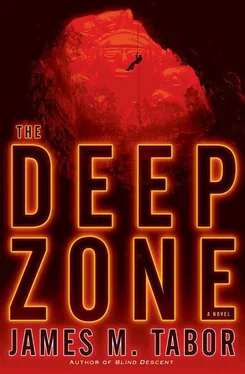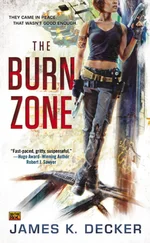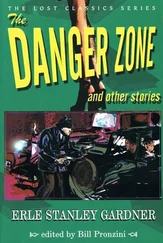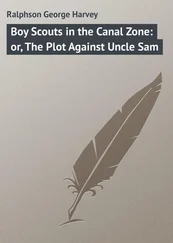Bowman ascended thirty feet above the cave floor. There he rested briefly in the big spot cast by the light beams of the other four, staring up at him from below. He moved his hands and feet so that they described half of a large circle. He stopped, hanging upside down above them like a giant red lizard in his brightly colored caving suit. He rotated the remaining half of the circle so that he was upright again.
“Now, here’s a really cool thing.” He peeled his left hand and both feet off the wall and hung by only his right hand. “These things work .”
He reattached his other hand and both feet, down-climbed, rejoined them.
“Things you should know: You don’t need to press hard. And you don’t need to have the whole boot sole in contact. A few square inches are enough. It’s like front-pointing on ice with crampons. You detach by peeling up and away from the bottom. Which is also how you walk on level ground, if you have to, though it’s awkward at best, as you might have noticed.”
“So now what, Wil?” Arguello was looking toward the giant pit.
“Now you practice. Let’s take…” He glanced at his watch. “Ten minutes. Go find a wall.”
At the bottom of a vertical section, Hallie put on the overshoes. Then, taking a deep breath, she moved her right hand slowly toward a spot on the wall about a foot higher than her head. When her hand was several inches from the wall, she began to feel a pull, like that of a magnet attracted to steel. Amazing . The closer she moved her hand, the stronger that pull became. When the “glove” touched rock, she felt it moving again, changing, joining itself, at the molecular level, with the wall. She tested it carefully, first pulling down on it and then, when it would not move, hanging more and more of her body weight from the hand placement. It was an unbelievably solid connection—as though her hand had become part of the rock. Ascending very carefully, she discovered that the climbing was less physically demanding than she’d expected, once she lost the tension of fear and reverted to good form, using the big muscles in her legs rather than trying to power up with her arms. Before long, she and Haight were moving smoothly around like a pair of giant spiders. Cahner took a bit longer, but eventually he, too, was crawling confidently up and down the wall.
Arguello, however, couldn’t seem to get it. Despite working himself into a red-faced sweat, he wasn’t able to rise more than a couple of feet. One hand or boot would peel off and he’d lose control of the others, dropping clumsily to the floor. Bowman watched, arms folded. After a while he walked over.
“I think I can help, Rafael. Don’t reach so high. You can’t use your most powerful leg muscles, and you don’t have the right angle to peel off correctly.”
Arguello looked skeptical, but he did as Bowman suggested, setting his hands closer to the top of his helmet, then finding his foot placements. He moved tentatively, as though expecting to fall off again, but before long, he was twenty feet above Bowman. He glanced back over his shoulder, grinning.
“It works!” He traversed side to side, went up and down a few more times, then stepped down beside Bowman. “Once you get it, these things are fun.”
“Good job, Rafael. You looked strong up there.”
Arguello shook his head. “Good job by you . If not for you, I would still be flopping around.”
“What I’m here for.”
“Hey, this place have a name?” It was Haight, calling down from far above.
Hallie answered. “You know cavers give names to everything, Ron. This is Don’t Fall Wall.”
DON BARNARD SAT BEHIND HIS DESK AND TRIED TO REMEMBER when he had slept last. He couldn’t recall, but he did know the current day, date, and time—because in a bit less than two minutes he would have a videoconference with the president of the United States and some of his key advisers.
He had put on a fresh white shirt and a new tie, blue with small silver stars. He fiddled a good deal with the knot, getting the dimple just right, and playing with the dimple made him remember the day his father had taught him to tie a tie, more than a half century ago.
“The dimple is everything, Donald,” his father had said. “And nothing. Nothing but a tiny detail, but of such details fortunes and tragedies are made.” He had been ten at the time, and, though he had dutifully said, “Yes, sir,” he’d had little idea what his father was talking about. Now he did.
He ran a comb through his white hair one more time, straightened his suitcoat. His attire was in good order. Not the face, though. The face looked like that of a man who had aged five years in two weeks. Nothing he could do about that. Maybe he would look better when this was all over. Then again, maybe not. Fatigue and fear were cruel sculptors.
He took a sip of water from the glass on the desktop, which was clean except for a fresh legal pad and a pen. He looked at his watch. Twenty-eight seconds.
He watched the red hand climb up toward 12, and just as it passed over that number, a soft chime sounded. The big flat-screen monitor on the wall changed from blue to a bright image of President O’Neil in the White House Situation Room. A tall black man with close-cut hair beginning to show flecks of gray, he was sitting at the head of the room’s thirty-foot-long mahogany conference table, wearing a blue shirt with the sleeves rolled up, collar loosened, dark red tie pulled down. He did not look here as he always did in public—calm, collected, quick to flash a dazzling smile. Now he looked tired. The president was flanked by Vice President Eileen Washinsky, Health and Human Services Secretary Nathan Rathor, and Secretary of Homeland Security Hunter Mason.
Barnard cleared his throat. “Good evening, Mr. President, Madam Vice President, Secretary Rathor, Secretary Mason,” he said respectfully.
“Hello, Dr. Barnard.” A quick flash of the famous presidential smile that, in the early years of his tenure, had lit up an entire country. “I’m sorry that our earlier conference had to be cut short. And for taking too long to reconnect. I need to learn more, and a lot of people say you are the best person to help me do that.”
He felt himself blush. “Thank you, sir.”
“In our previous discussion, you said that this germ might have the potential to destroy our armed forces from the inside out. Has that proved to be an accurate assessment, Doctor?”
“More accurate than when we last spoke, sir. Its contagion factor appears similar to that of smallpox. Its mortality rate is worse—something like ninety percent thus far.”
“Ninety percent?” Eileen Washinsky’s eyebrows shot up. “Is that really possible?”
“I’m afraid so, Madame Vice President. No other known pathogen, possibly excepting Ebola, is so deadly. It’s too early, and our sample size is too small, to make final determinations, of course.”
The president spoke. “Doctor Barnard, we have every CDC lab not otherwise engaged in critical national security at work. We also have the military’s biowarfare people involved. We have not brought in any private-sector entities because of security concerns.”
“Thank you, sir. I concur that letting the bad news out before we have any good to counter it with could trigger a panic.”
“We agree on that, Doctor,” rasped Hunter Mason. He was a massive man, not tall but plated with muscle from years of weight lifting, his personal passion. He had a shaved head shaped like an artillery shell, and even in a tailored business suit he looked like he could bench-press a refrigerator. His voice sounded like gravel sliding out of a dump truck. “But when do we start to talk about this?”
Читать дальше












